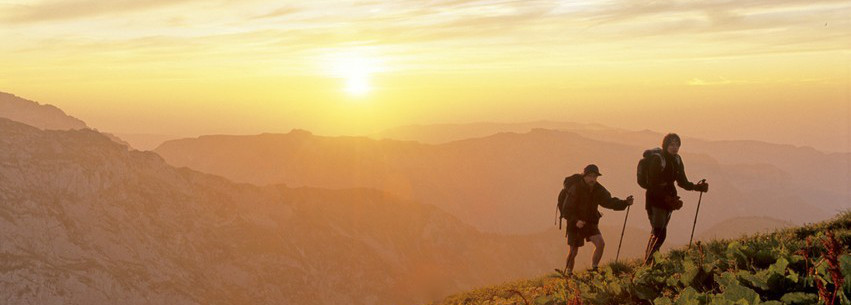ARTACLIM project - Bauges Regional Natural Park
Integrating climate change adaptation in Regional Natural Park Charter
Context
The Massif des Bauges is a rich territory blessed with ample natural resources, biodiversity and well-conserved landscapes. The creation of the Regional Natural Park in 1995, together with several sustainable development projects, has contributed to preserve the environmental quality of the territory. In 2011, the massif was awarded the UNESCO Global Geopark label.
However, climate change is significantly impacting the Massif des Bauges, as highlighted in 2014 in the white book of the climate strategic plan of the Regional Natural Park. In the medium-altitude ski resorts (<1200m) of the massif the lack of snow has become not only an ecological but also an economic preoccupation. In fact, local warming (+2.3°C in 60 years) remains twice as high as the warming of the northern hemisphere and has contributed to a reduction of water levels and of vegetation growth. Therefore, drought episodes are becoming longer and more frequent with a spring flow decrease of 25% in 30 years in the Cheran. Moreover, forests are more vulnerable to wildfires, with trees species like spruce becoming less adapted to medium-altitude areas and trees growing older on average, which represents certain risks for the resilience of the ecosystem.
The initiative
In collaboration with the park, the ARTACLIM (Adaptation and Resilience of Alpine Territories to Climate Change) project, funded by the European program ALCOTRA (Latin Alps Cross-border Cooperation), aims to provide inputs on how to consider climate change effects into the territory management, and to improve territorial planning by public institutions. It is helping actors in the Bauges Massif to integrate climate change effects and climate change adaptation in territorial development, in coherence with the Park Charter. This charter has the following five aims for the next 15 years:
- Protecting natural, cultural, geological heritages and landscapes
- Promoting sustainable economic and social development
- Sustainable land use planning
- Education
- Innovation and experimentation
The support to various sectors of activities during the climatic transition has become a priority for the Park for the next 15 years.
An analysis of vulnerability of 3 pilot territories: Semnoz (and other ski resorts), Hautes Bauges and Combe de Savoie has been carried out. These three sectors were chosen as representative of the diversity of known situations / activities on the massif (tourism, breeding, pastoralism, water management, wine production, forestry, natural risks). The final objective of this analysis is to provide support for the co-construction of local adaptation strategies.
Results, limits and enable factors
Despite the complexity of the subject, the lack of training and difficulties to raise people and actors awareness, thanks to the ARTACLIM project, different actors have gathered to plan in the long term how to change the current use of the territory. Part of the actors were already working on mitigation but now they are also dealing with adaptation. Climate change is also starting to be integrated into the urbanisation local plan. It was the first time that 67 municipalities were gathering around the same table to discuss adaptation strategies and recommendations.
The programme has developed a patrimonial audit related to climate change on the Combe de Savoie and developed a study on vulnerability and adaptation to climate change in Semnoz massif, Combe de Savoie and Hautes Bauges. The Park Charter is being revised with recommendations and adaptation strategies to climate change (among other local issues). For example, a strategy adopted to adapt to snow cover vulnerability is to diversify ski resorts activities during the summer season.

Location
Bauges Regional Natural Park

Coordinator
AGATE [1]
Bauges Regional Natural Park

Key words
Snow cover decrease / Drought / Good Quality of Life / Nature´s Contributions to People / Climate change adaptation / Public Policy

Timeframe
2017-2020

Current status
Long-lasting

Type of ecosystems
Vineyards and mixed forest-pasture ecosystems from medium-altitude

More info
Updated on 8 February 2022




